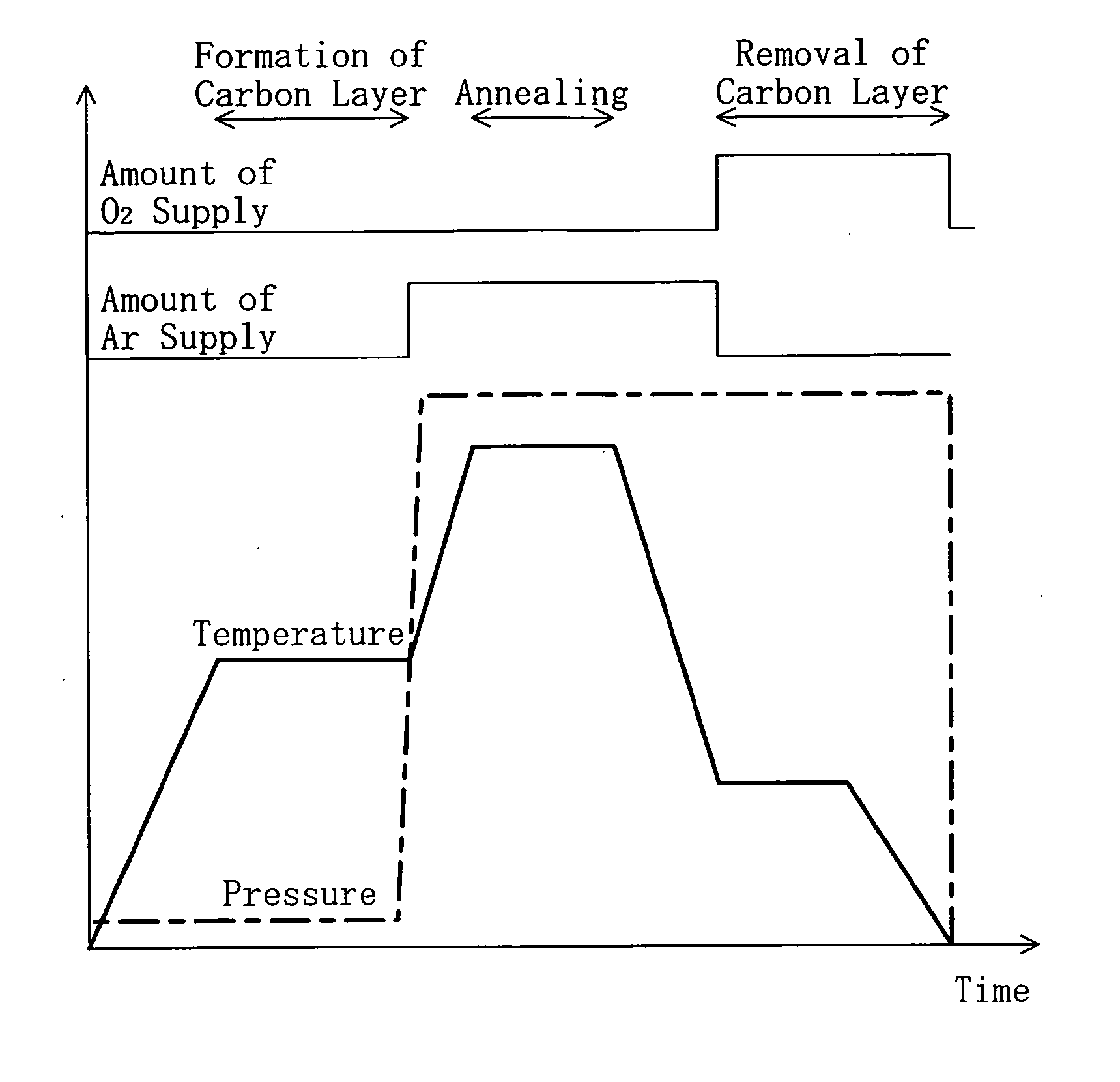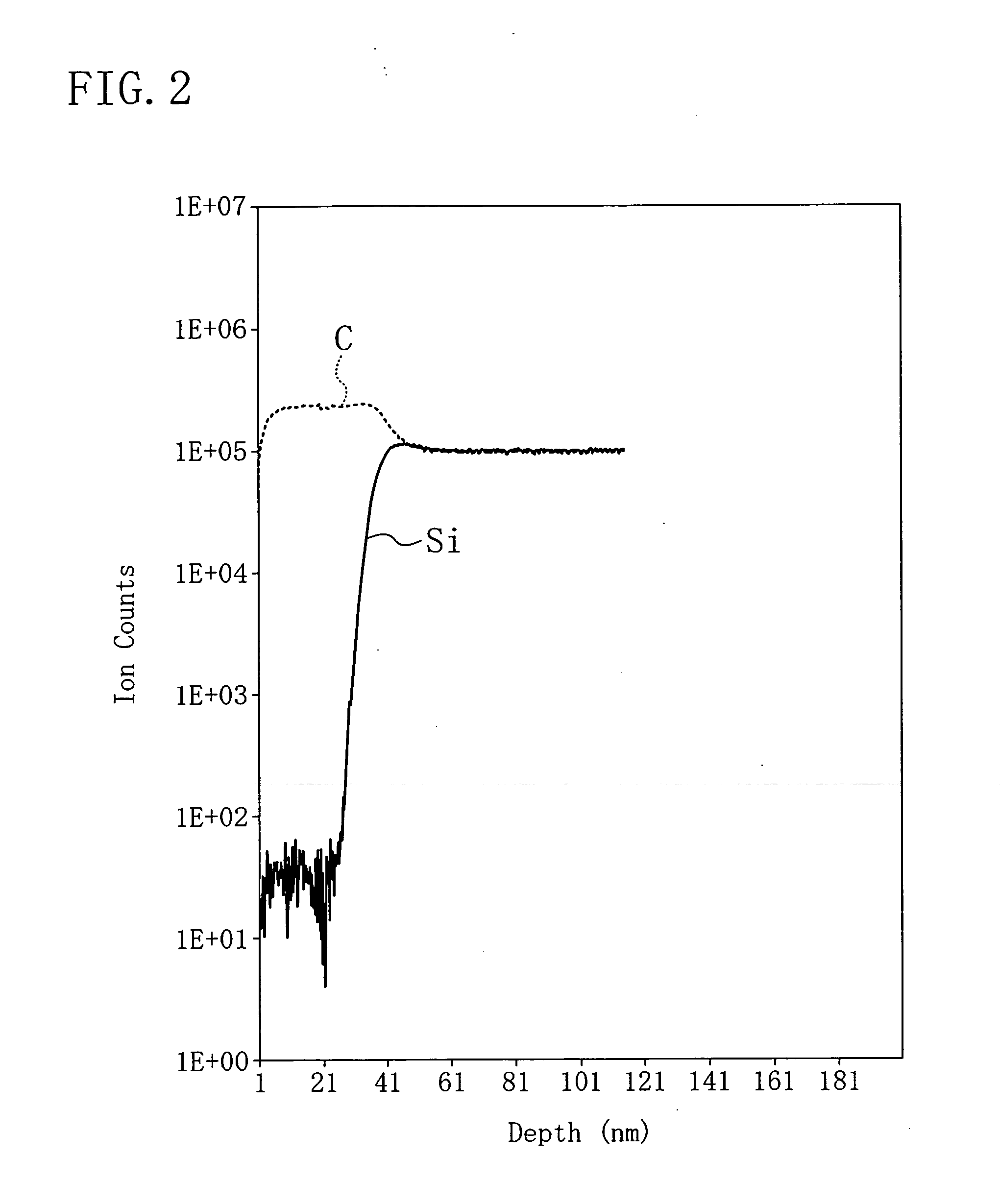Silicon carbide semiconductor device and process for producing the same
- Summary
- Abstract
- Description
- Claims
- Application Information
AI Technical Summary
Benefits of technology
Problems solved by technology
Method used
Image
Examples
embodiment 1
[0082] A method for fabricating a semiconductor device according to a first embodiment of the present invention is characterized in that a carbon layer is formed on a substrate surface by performing annealing in a reduced pressure atmosphere before an activation annealing process after ion implantation and then the activation annealing is performed continuously by raising a pressure and a temperature. Referring to the drawings, the semiconductor device and the method for fabricating the same according to the first embodiment will be described herein below.
[0083]FIG. 10 is a cross-sectional view showing the structure of an annealing furnace used in the method for fabricating the semiconductor device according to the present invention. As shown in the drawing, the annealing furnace comprises: a reaction furnace 150; a susceptor 152 made of carbon which is for fixing a substrate 151; a support shaft 153; a coil 154 for heating a sample; a gas supply system 158 for supplying an argon g...
embodiment 2
[0108] As a second embodiment of the present invention, a silicon carbide MOSFET having a step height of 1 nm or less at the upper surface of the layer into which an impurity has been introduced, which is an example of the silicon carbide semiconductor device, and a method for fabricating the same will be described with reference to the drawings.
[0109] FIGS. 5(a) to 5(c) and FIGS. 6(a) to 6(c) are cross-sectional views illustrating the method for fabricating the silicon carbide MOSFET according to the present embodiment.
[0110] First, in the step shown in FIG. 5(a), a silicon carbide substrate 21 is prepared. As the silicon carbide substrate 21, there is used, e.g., a 4H—SiC substrate 1 having a principal surface thereof tilted at an off-angle of 8 degrees in the [11-20] (112-bar 0) direction from the (0001) plane and with a diameter of 50 mm. The substrate is of an n-type and the concentration of carriers therein is 1×1018 cm−3.
[0111] Next, an n-type impurity doped layer is grown...
PUM
 Login to View More
Login to View More Abstract
Description
Claims
Application Information
 Login to View More
Login to View More - R&D
- Intellectual Property
- Life Sciences
- Materials
- Tech Scout
- Unparalleled Data Quality
- Higher Quality Content
- 60% Fewer Hallucinations
Browse by: Latest US Patents, China's latest patents, Technical Efficacy Thesaurus, Application Domain, Technology Topic, Popular Technical Reports.
© 2025 PatSnap. All rights reserved.Legal|Privacy policy|Modern Slavery Act Transparency Statement|Sitemap|About US| Contact US: help@patsnap.com



